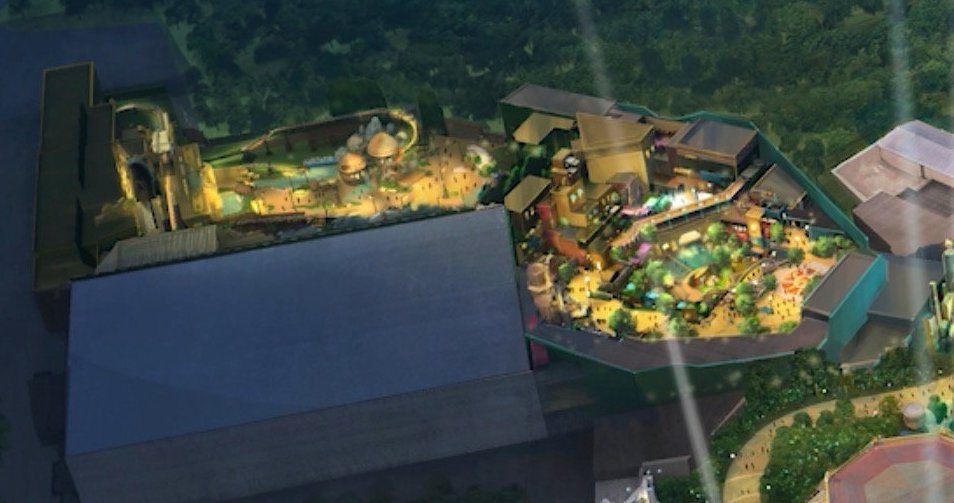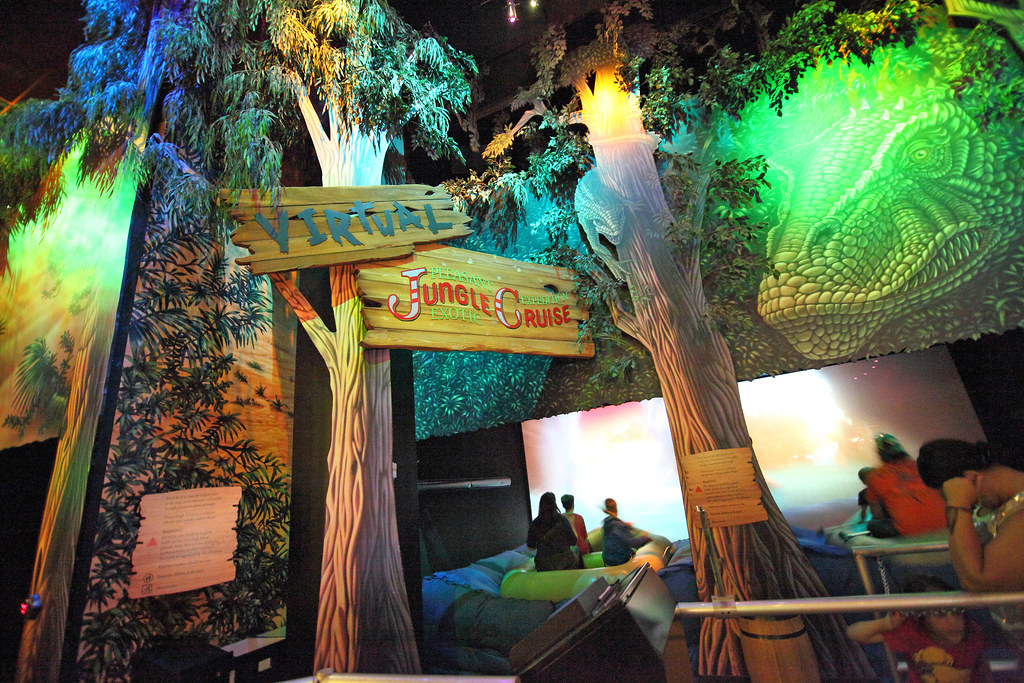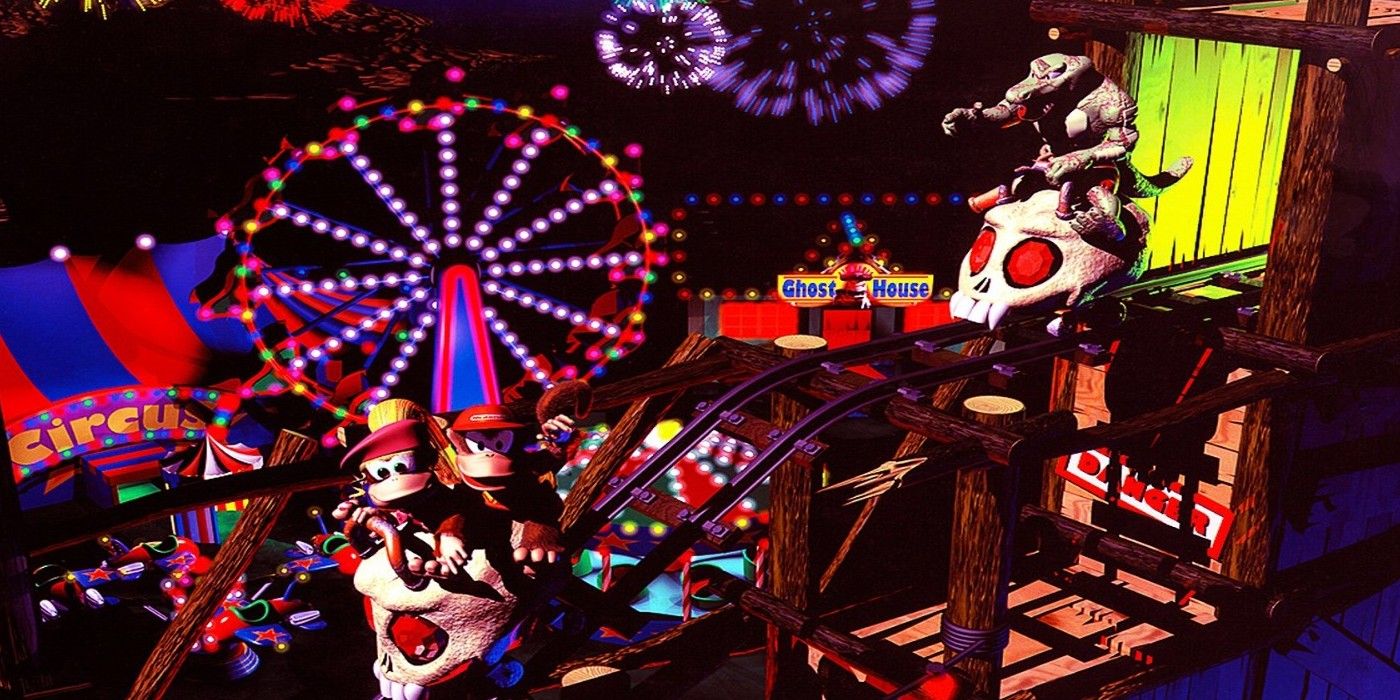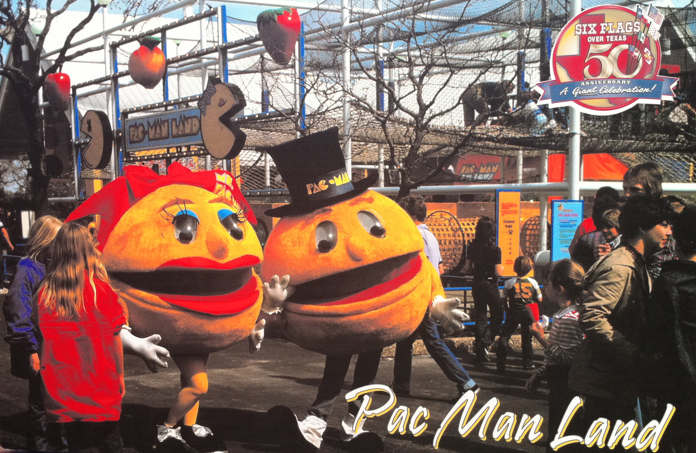
As anticipation builds for theme park diehards, Universal Studios Orlando plays its usual game of secrecy. Amidst their cycle of drumming up anticipation for their coming attractions, Universal reveals as little information about Epic Universe as they can without shaking our building curiosity.
Only three clues have been passed onto fans since its announcement four years ago: the park’s logo, an image of birds-eye-view concept art, and a map of the resort showing where Universal’s third gate is under construction.

Fans have concluded from only this handful of concept art images that a Donkey Kong Country expansion is coming to Epic Universe. It serves as an expansion to the success of Super Nintendo World, which opened at Universal Studios Hollywood and Japan. It will feature an E-Ticket mine cart coaster attraction. Guests will enter the jungles of Donkey Kong Country and partake in the sidescrolling hijinks of its namesake gorilla. This is a reverse ”Virtual Jungle Cruise” from Disney Quest, the virtual environment forays into a physical space.
Universal Studios finds video games artistically and financially viable properties to recreate in their theme parks– a step away from their founding ethos of “Ride the Movies.” Universal took a gamble by creating Super Nintendo World in the first place; rather than develop attractions solely based on their original filmography and licensed IPs, Universal expanded its horizons in determining Nintendo’s viability as a theme park brand. So, we take this opportunity to explore why video games themed attractions work as well as those that 'ride the movies'...

The Cultural Legitimacy of Video Games
Inserting the Super Mario franchise into a theme park setting is a justifiable progression of narrative storytelling. Movies, theme parks, and video games base their contents and symbology on similar guiding principles. Guests, audience members, and players wish to immerse themselves in a crafted environment where an entertaining (but predetermined) narrative unfolds. How users participate in these mediums varies, but their narratives, meanings, and tactics tend to reflect or mimic each other.
Academic sources have noted the similarities between various forms of narrative entertainment progress, and theme parks and video games are no exception to their theories. According to author Margaret J. King’s THE THEME PARK: Aspects of Experience in a Four-Dimensional Landscape, theme “… are the multi-dimensional descendant of the epic, book, play, and film; four-dimensional stories in which the ‘guests’ - in theme park parlance - can immerse themselves… Like the camera lens, they position the visitor to follow a series of vignettes advancing the narrative.” King may as well describe video games with these exact descriptions– here, too, is a descendant of these forms of storytelling where the user enters circumstances that advance a given narrative.

Making the Virtual a Reality
Each of these mediums carries its own set of freedoms and limitations, and they must adjust its scope to be entertaining; movies sacrifice immersion for improved narrative control, and theme parks sacrifice detailed narratives for improved immersion. Video games exist between these notions, allowing both circumstances to a limited degree.
In The Interactive Theater of Video Games, Authors Daniel and Sidney Homan explain the limits of a medium’s powers when reimagined as a vessel that changes how its interacts with its audience. They write, “Nothing in the theater can replace a good production of Hamlet or Stoppard's Rosencrantz and Guildenstern Are Dead. Experiments with more interactive theater that offer an emotional or intellectual involvement beyond that of the spectator who remains in the house reaction is limited to applause, may remain just that— experiments.”

As such, translating a virtual environment designed for a game into a physical environment confined by building codes presents a challenge for park builders. King notes Disneyland’s representations of imagination and how they juxtapose the realities of how they can exist; “The walk-through castles, frontier forts, and other exotic but familiar environments, populated by cartoon characters the size of forklifts, are simulations and symbols, not historic or scientific models.”
To convert the space, scale, and characters of a game that wasn’t imagined to reflect limited budgets, architectural challenges, and a world without talking animals is a daring task that only Universal Studios has executed successfully thus far.
So, let's take a look at the history of video game attractions and Video Games as a progression of narrative technology...

Add new comment